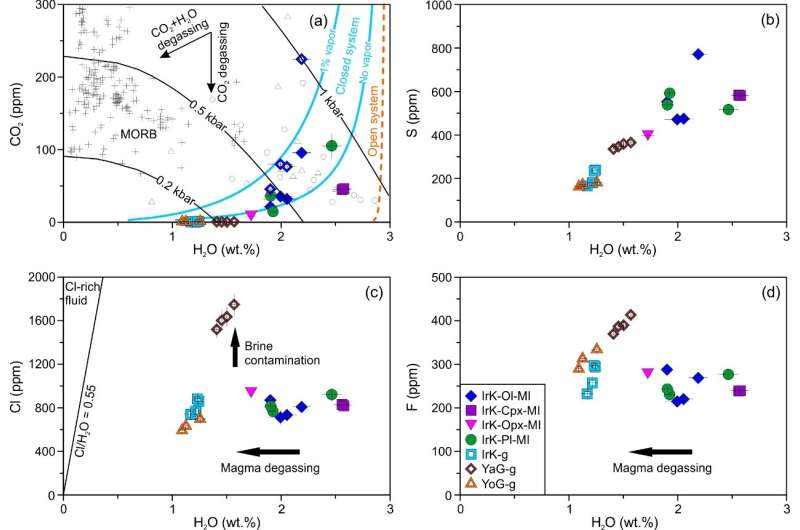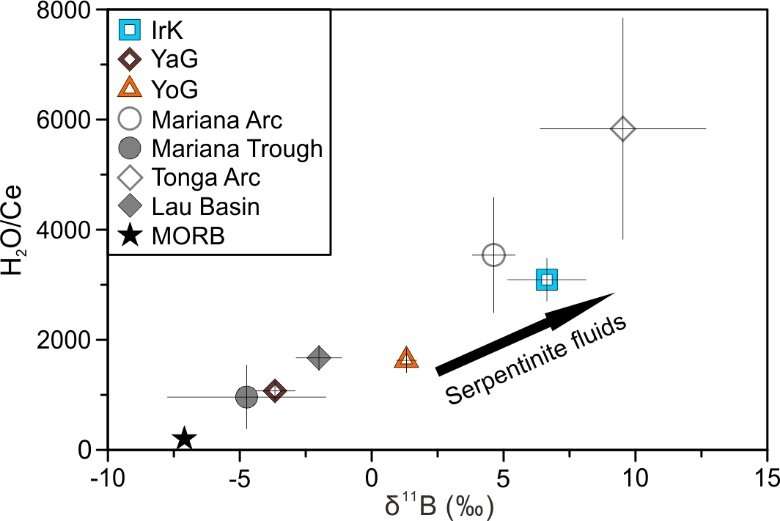This article has been reviewed according to Science X's editorial process and policies. Editors have highlighted the following attributes while ensuring the content's credibility:
fact-checked
trusted source
proofread
Study reveals intense CO2 degassing process in magmas

The Okinawa Trough is a newly formed back-arc basin located in the outer margin of the continental shelf of the East China Sea. The submarine hydrothermal activities are widely developed in the Okinawa Trough. A typical feature of the basin is that the hydrothermal fluids are highly rich in CO2.
An increasing number of studies suggest that CO2 in hydrothermal fluids may come directly from magmatic degassing. However, the process of CO2 degassing in the Okinawa Trough magmas is poorly understood, and it is unclear whether the magma can release enough CO2 into the hydrothermal system.
Recently, Dr. Zhang Yuxiang of Prof. Zeng Zhigang's team from the Institute of Oceanology of the Chinese Academy of Sciences (IOCAS), in collaboration with Prof. Glenn Gaetani from the Woods Hole Oceanographic Institution, selected volcanic rock samples from the areas near the hydrothermal fields of the southern Okinawa Trough, analyzed the volatile compositions (CO2, H2O, S, F, Cl) in mineral-hosted melt inclusions and matrix glass using ion probe, and discussed the process of magmatic degassing.
The study was published in Lithos on March 23.
The researchers found that the CO2 contents in the matrix glass and some of the melt inclusions were very low (< 10 ppm), the CO2 contents positively correlated with water contents, and the CO2 contents in the matrix glass were even lower than the instrumental detection limit (< 1 ppm). On the one hand, this ruled out the possibility that CO2 came from leaching the basement rocks. On the other hand, it suggested the magma had experienced an intense CO2 degassing process.

They estimated that at this level of CO2 degassing, 1 km3 of magma could support a high CO2 flux of hydrothermal vents for more than 500 years. Therefore, from the perspective of magmatic degassing, this study illustrates that magma is an important potential source of CO2 for hydrothermal system.
The researchers also found that the magma in the Okinawa Trough also underwent a certain degree of S degassing, but the halogens (F and Cl) did not change significantly during the magma degassing.
"These understandings can provide research support for investigating the material correlation between the magmatic system and the hydrothermal system in the subduction zone," said Dr. Zhang, first author of the study.
In addition, melt inclusion analysis and plagioclase hydrometer were combined to estimate magma water content and its variation from the modern arc front to the back-arc spreading centers. Together with data from the Mariana and Tonga subduction zones and the mid-ocean ridge basalts, a good positive correlation between H2O/Ce and boron isotope (δ11B) were established for volcanic rocks in subduction zones.
Boron isotope is an effective indicator of subducted serpentine, which is very rich in water and is considered an important source of fluid in subduction zone. This correlation also indicates that fluids derived from subducted serpentine have an important contribution to the water budget of arc magma.
More information: Yuxiang Zhang et al, Pre-eruptive water content and volatile degassing processes in the southern Okinawa Trough magma: Implications for subduction zone water recycling and magmatic contributions to hydrothermal systems, Lithos (2023). DOI: 10.1016/j.lithos.2023.107145
Provided by Chinese Academy of Sciences





















